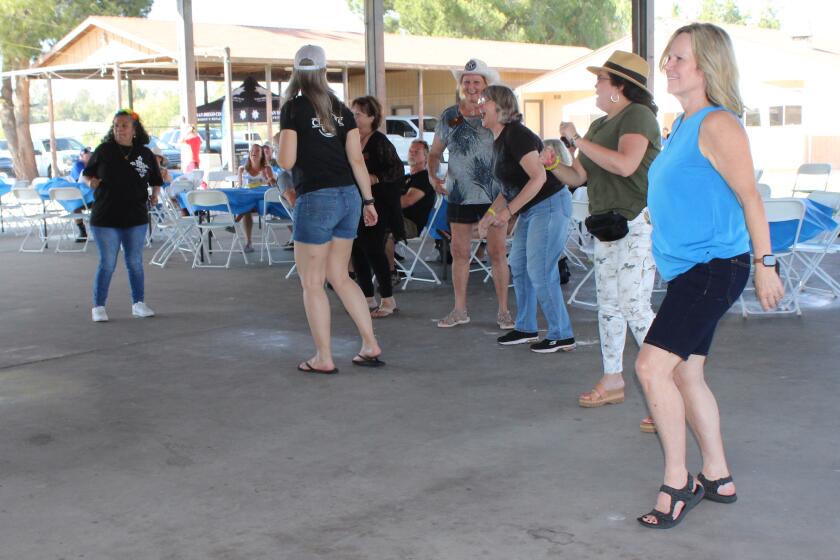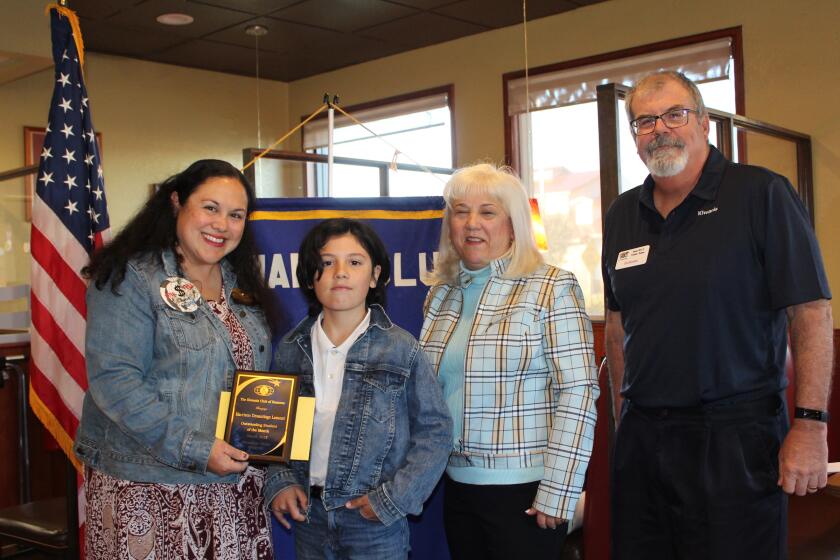Remembering a young pilot on Memorial Day
Three-Thousandths of a Second: Grace and Tragedy on a Vietnam Helicopter Flightline
Editor’s Note:
Recent events and newly-surfaced photos have evoked memories of a tragedy that occurred decades ago while Ramonan Jon McKee was serving in Vietnam. McKee, who retired from the Ramona Unified School District after teaching for 34 years, shares his story.By Jon McKee
Numbers — I like numbers. I like doing math. As a vanguard Boomer, it’s a mental gymnastics thing, not unlike the cycling, I turn to for the cardio.
Like certain sights, sounds, and smells, numbers can trigger for me any variety of recollections and associations — numbers like 40, 1969, 212, 3/1000…
The number 40 was in the news this year. That’s how many years ago Richard M. Nixon launched his opening to China. That’s how many years ago I was down to my final few weeks of an obligatory four-year stint of service to country in the U.S. Army, which included an earlier tour of duty in the Republic of South Vietnam.
How did a college kid like me get so lucky? Probably by taking nearly five years to
graduate and, hence, choosing to join Army ROTC (Reserve Officers’ Training Corps.) as an “escape” from the Draft Board’s summons.
I’d also figured out a brilliant way to avoid being sent to Vietnam — I volunteered for the Flight Cadet program. Not only would Uncle Sam pay for flight lessons toward a pilot’s license in my senior year and thereby guarantee Army flight school afterward, but the time all this training entailed would virtually guarantee that the war would be long over before I completed it.
1969 — one full year after graduating from college and they’d held the war over, just for me! The ROTC Flight Cadet program? Beautiful. I’d received my pilot’s license by the spring of ’68. The government had spent some $900 on me for this airplane training. In no way were they going to waste that kind of money by sending me to helicopter school, right?
Reality check Number 1 arrived in the form of Army orders while still an undergraduate: commissioning as a second lieutenant upon graduation, basic branch training at Fort Benning, Ga., and something called ORWAC at Fort Wolters, Texas.
And a reporting date for Vietnam: April 20, 1969.
This last was no worry. No way would this war continue THAT long! But ORWAC — what’s that? The professor of military science didn’t disappoint: “Officer Rotary Wing
Aviator Course.” Rotary wing? What does that mean?? “CHOPPERS!!”
Reality check Number 2: To add insult to injury, the Army knocked 10 days off my leave time prior to reporting to Vietnam. Hence, on April 10, 1969, a brand-new and utterly jet-lagged UH-1 Huey pilot reported for duty to the 190th Assault Helicopter Company “Spartans.”
The number 212? That’s the operational RPM (rotations per minute) of a Huey’s main rotor blade.
The math will tell you that the rotor is making three and a half rotations every second. With two blades emanating from the rotor mast, it means that one or the other of the two blades is passing over the cabin seven times per second.
The diameter of the rotor disk is some 55 feet. Here, the math gets a little trickier, but, essentially, the tip of a Huey’s main rotor blade is spinning at close to the speed of sound. When something substantial strikes it, it will flex down, drastically, catastrophically, as I was to learn graphically early one morning a month later in May.
I was right-seat, copilot, with a fine pilot from Sacramento named Ben Wadsworth. First light of dawn was barely spreading over the heliport, but all company aircraft were already at full operational power, awaiting each one’s turn to hover on to the departure lane, take off, and call “clear” so that the next aircraft in formational order could depart — some 13 Huey’s in all: 9 troop ships, 2 gunships, the commanding officer’s command & control, and maintenance.
Each bird carried a crew of four: pilot, copilot, crew chief, and door gunner. Full fuel bladders, we were to depart, marry up in formation, pick up our infantrymen, and insert them in any landing zone they’d choose.
And that was when 3/1000 of a second saved my life. Ben and I were to be “Chalk 5”
that morning — the fifth aircraft in the formation. We sat in our cockpit, monitoring our headsets as each aircraft called “clear,” awaiting our turn for take-off, which would come immediately after Chalk 4, parked in the revetment immediately to our right.
Revetments were tricky things; some 6 feet high, L-shaped, they were designed to protect the nose and one side of each aircraft from incoming rocket and mortar fire. Each aircraft was assigned to its own revetment, and hovering into and out of these could be difficult because of their effect on rotor wash while at a hover. Nonetheless, it was a necessary skill, developed through experience — except for that morning.
“Chalk 3 is clear.” Ben and I looked over to Chalk 4 on our right as he brought his bird up to a hover, and then directed our attention back to our instrument panel in preparation to follow upon his departure.
I have no recollection whatsoever of any sound from the collision that ensued, even though a pilot on the tarmac later told me he thought a howitzer shell had exploded on the flight line. I only remember feeling the most violent, concussive force I had ever experienced in my life. Neither Ben nor I had any idea of what had just happened. We simply stared at each other across the center console in wide-eyed and open-mouthed astonishment.
“Maybe our blade hit the revetment from his rotor wash,” I remember speculating aloud. Then I looked out my cockpit door and saw an utter shambles of what had been, just seconds earlier, Chalk 4 at a stable hover with pilot and copilot in front and a friendly door gunner in back exchanging a thumbs-up with us at the start of “just another day in Vietnam.”
Alongside the wreckage on the tarmac lay a sight I shall never forget: the body of the copilot, lying stretched out as though in sleep, headless. Chalk 4’s tail rotor gear box had struck the tip of our main rotor blade.
3/1000 of a second — the time it takes a rotor blade to pass through a quarter of its rotational arc. It’s the difference in time between a helicopter’s rotor blade that flexes down and slices off its own tail boom with enough leverage to rip out its main transmission assembly before sailing down the flight line and a rotor blade that flexes down just that much later — and instead of slicing through the tail boom in its clockwise rotation, slices through the cabin.
The hapless pilot had unknowingly drifted away from his revetment toward us, before swinging his tail boom around to hover on to the flight line for departure, thereby making inevitable the collision. Upon impact, their main rotor blade had sliced through the roof of their own cabin and smashed into the three-fourths-inch ceramic armor of the copilot’s seat, the right seat, crumpling it forward, snapping both his shoulder harnesses and seat belt, launching him into eternity before he could even begin to realize that anything was amiss.
As for the pilot, he was trapped in his seat, the overhead console having come down against his face, pinning him in the wrecked cockpit. I could see him flailing at the console with both hands, attempting to free himself.
Aboard our own aircraft, Ben was attempting to shut down our Lycoming jet turbine engine, whining out of control, full fuel bladders at the start of the day — a fruitless effort since the controls from our throttle to the engine had been severed. Somehow, the force of the impact had knocked our door gunner out of his seat by the transmission well and onto the tarmac. He walked up to my door with an extremely skinned and bloodied nose. At the same time, our crew chief climbed onto the roof of our aircraft, fire extinguisher in hand, and emptied its contents directly into the jet turbine’s air intake, literally putting out the fire and shutting down the engine.
Rescue personnel were already pulling the trapped pilot out of his cockpit, but his engine, too, was screaming out of control, maximum fuel on board. A maintenance officer walked directly to the engine compartment, opened an access panel, snapped safety wiring with a screw driver and uncoupled the quick-disconnect valve of the main fuel line. For this selfless bravery, he would receive a medal.
Later, it was discovered that our rotor blade, boomeranging across the flight line, had landed length-wise in the revetment of Chalk 3, who less than a minute earlier had pulled pitch and departed the heliport. In a daze in the cockpit, I recall deliberating momentarily whether or not I should disconnect my flight helmet headphone cord prior to leaping to the tarmac. I did not. Safely out of the aircraft, I recall actually walking back into the wreckage to retrieve my cap from under the tail rotor pedals, suddenly conscious that I was outdoors “without cover,” such was my state of shock at the moment.
A mandatory post-crash visit to the flight surgeon by both air crews revealed my only injury. Under a slight tear in the left pant leg of my flight suit, the flight surgeon found a small scratch on the inside of my left thigh. He determined that I had struck my leg on the control stick in jumping out of the cockpit. Over the next three weeks, my thigh was to swell and turn every conceivable shade of green, blue, black, purple, and yellow.
Still later, an investigation review board recommended that the pilot of the misdirected aircraft be relieved of his aircraft commander’s rating. He was to remain on flight status, but never again flew left seat for the remainder of his tour.
Forty years ago this spring, that period of my life came to an end. On Memorial Day, I shall raise a glass to the memory of that young copilot, to the family that he was taken from, and to the grace of three-thousandths of a second that May morning of 1969...I am exceedingly grateful.
McKee served as a 1st lieutenant and was promoted to captain just before his tour was over. Three months ago, another member of the 190th Assault Helicopter Company “Spartans” contacted him and began reuniting the members of the company.




